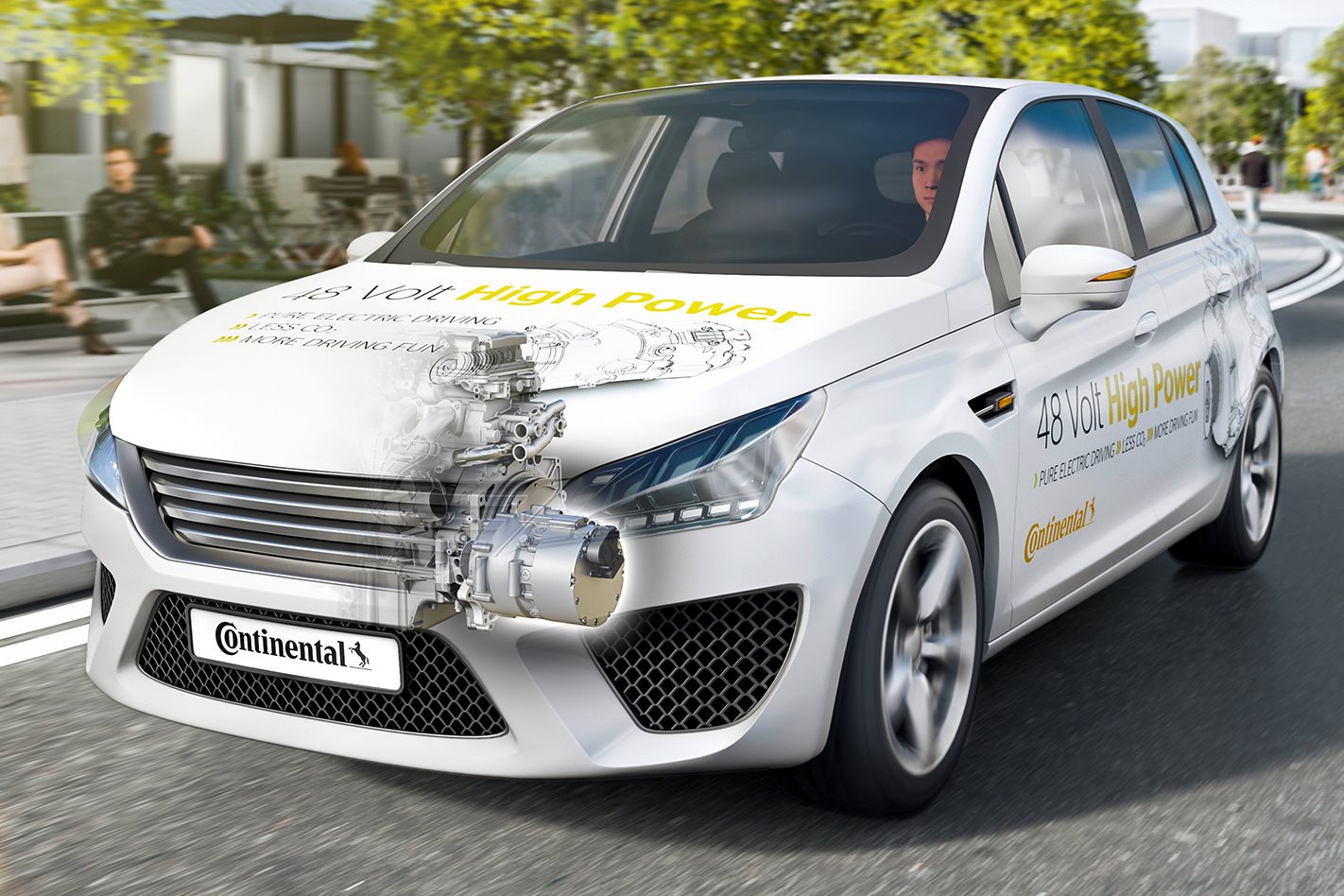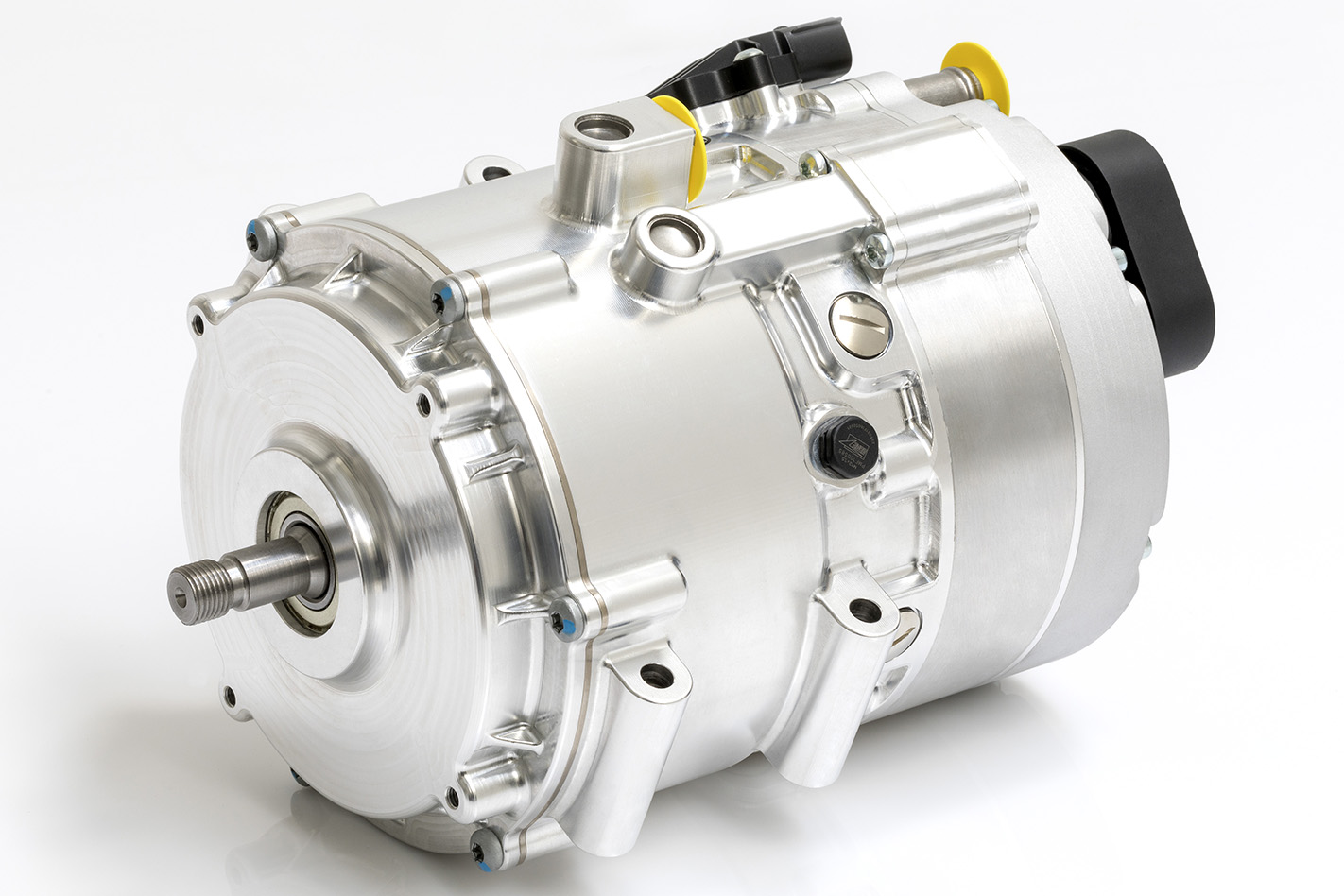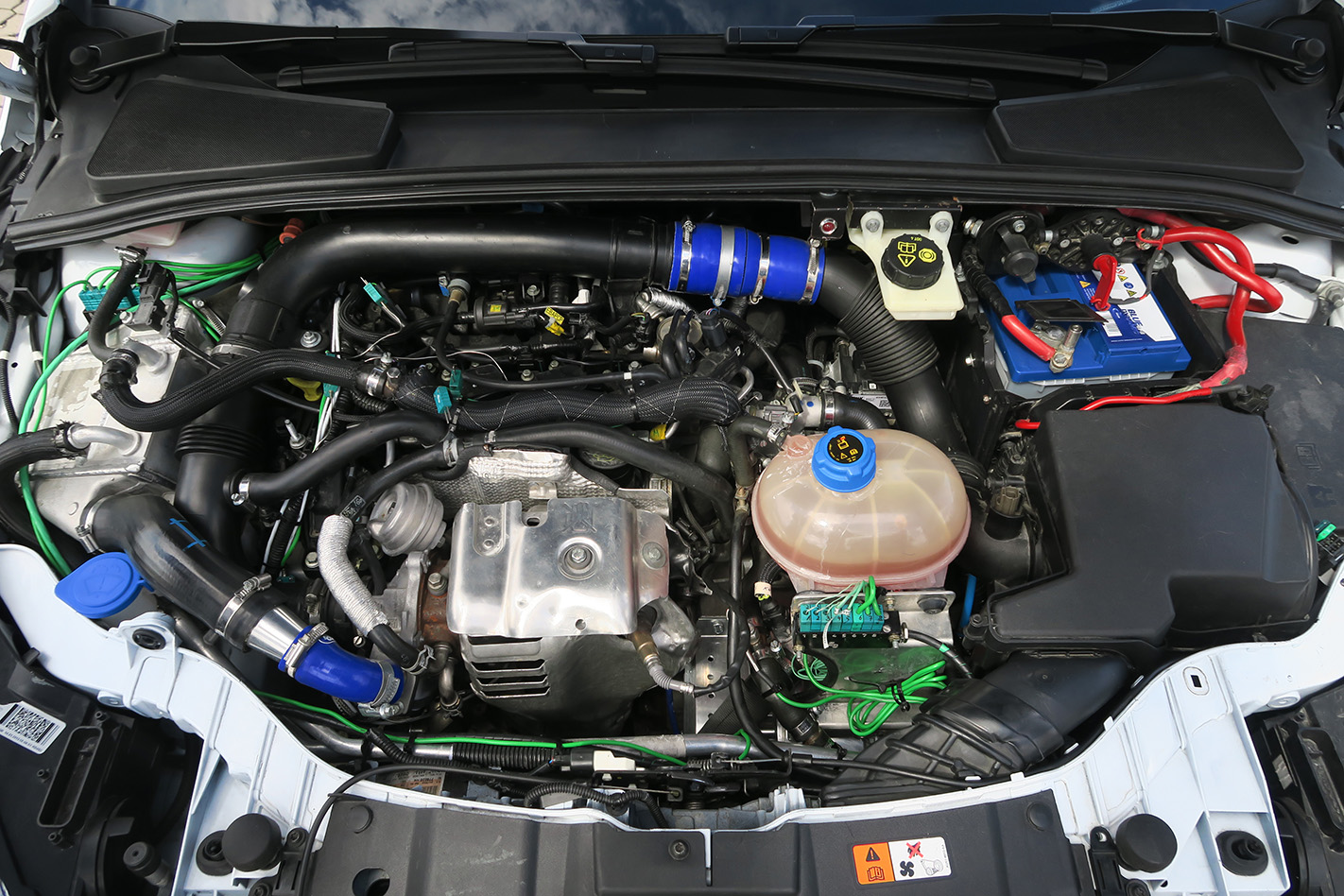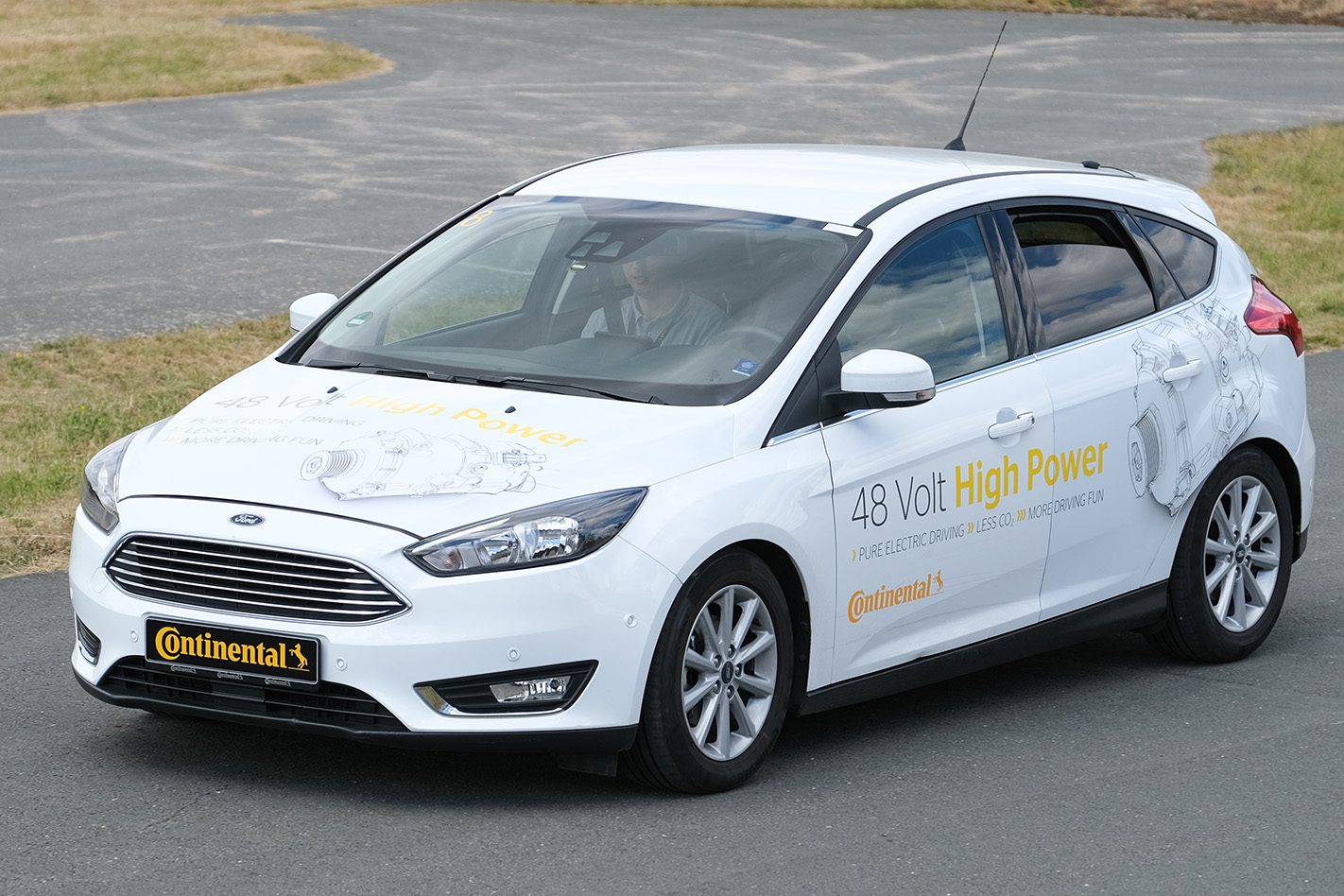
If you could quickly and cheaply turn your car into one that sips barely any fuel in day-to-day driving, yet still retains all of its mechanical thrust – with a little bit extra on top for days when there’s no traffic in front – you’d take that option, right?
Continental reckons the world’s carmakers certainly would, and the German company has revealed a high-powered 48-volt hybrid system – which some might regard as a ‘mild hybrid’ – that it says could be easily adapted to existing powertrains to turn regular combustion-powered models into something more eco-friendly.
Why is ‘mild hybrid‘ in inverted commas? Because with the amount of electrification that Continental’s system offers, its effect on a car’s fuel consumption is anything but mild. In fact, the company claims it’s good for a 20 percent improvement in economy, without the associated cost and complexity of a regular hybrid system.
Continental might be known more for its tyres, but the German company – one of the oldest in the automotive industry at 148 years old – actually does more business in things that run on electrons than things that run on rubber.

Electronic components like sensor modules and controllers are the $50 billion company’s bread and butter, and it is already a key supplier of parts for electric and hybrid vehicles for a number of manufacturers.
Its latest addition to its component catalogue, announced at the 2019 Continental Tech Show, is a 48-volt electric motor and associated control electronics that are designed to deliver drive directly to the transmission via a rubber belt.
It’s a further development of a previous system that could supply a little over 14kW of electric power to the transmission. The new system roughly doubles that, delivering a far more useful 30kW of power – enough to easily accelerate and maintain forward motion at urban speeds – and promises a reduction in overall fuel consumption of 20 percent.
That’s all from an electric motor which is only marginally bigger than a modern alternator or airconditioner compressor – think of a large tin of Milo, and you’d be close.
In fact, on the demo vehicle Continental had on display, you couldn’t even see the motor when the bonnet was up. The only tell-tale is its integrated control electronics housing, the thing with all the green wires in the photo below.

To date, most mild hybrid systems have been little more than repurposed alternator setups and an extension of the engine start-stop feature.
By using the alternator – the part of the car which generates electricity when the engine is running – to work as a motor when re-starting the engine, these kinds of mild hybrid systems mainly achieve fuel savings through the start-stop feature shutting down the engine when the car is stationary at traffic lights, by brake energy recuperation, and by reducing alternator output (and thus fuel-wasting mechanical drag) when the battery doesn’t need charging.
They’re not typically capable of delivering any meaningful electric drive to the wheels, though some have a modest ‘boosting’ effect. Continental’s system, however, is able to deliver far more grunt to the wheels in a purely electric mode (its key point of difference), without requiring the rest of the car to be designed around a dedicated hybrid powertrain.
These systems typically use ultra-high voltages in the order of hundreds of volts for its drive motor. They also add weight, cost, packaging difficulties and safety issues to a car build.
We drove a Ford Focus prototype equipped with the 48-volt High-Power hybrid system, and while there were plenty of rough edges involved in retrofitting the electric motor to a car never designed for one, its driveability was impressive.
The amount of thrust it was able to deliver was plentiful for low-to-medium speed city driving, and Continental says that even though there’s just 30kW on tap (a number that’s limited largely by the physical size of the motor), it’s good for a top speed of 80-90km/h, depending on application.

Its claim of delivering a 20 percent boost to efficiency is believable, too. Continental makes no claims around how much range can be squeezed out of the 5.5 watt-hour battery, but with the demo vehicle showing an average electricity consumption of between 200-300Wh, some basic maths reveals there’s enough juice for between 1 and 1.5 minutes of purely electric driving before the combustion engine needs to kick in again.
That’s not bad for a battery pack that’s roughly the size of a suitcase. Don’t forget that batteries are the main reason why EVs and plug-in hybrids cost so much more than a conventional car – if you reduce the need for a big battery, you reduce the cost of the overall machine.
And unlike many 48-volt mild hybrid systems out there, Continental’s strategy of having the electric drive feed directly into the gearbox is a far more intelligent alternative to simply replacing the alternator on the front of the engine with an electric motor.
It means the motor can turn the wheels completely independently of the engine, so energy isn’t wasted in rotating a big, heavy lump of metal when there’s no fuel being burned.
It also enables the full gearing range of the transmission to be used to increase the road speeds possible in electric-only mode. Clever. Conventional 48-volt mild hybrid systems typically claim an efficiency gain of just 4 percent, yet Continental’s delivers an advantage that’s five times that.
Continental says the High-Power hybrid system is now ready to enter series production, however we’ve yet to see which manufacturers will be the first to integrate it with their own vehicles. It’s certainly not something that private individuals can apply to their own cars as a retrofit – it may be billed as much simpler and cheaper than other hybrid options, but there’s still a lot of engineering required to make it work on a road car.
But once it does hit the market, its ability to put a genuine hybrid option into huge range of vehicles at minimal cost to the manufacturer – and thus the consumer – could be the catalyst to sizable emissions reductions in the long term.



